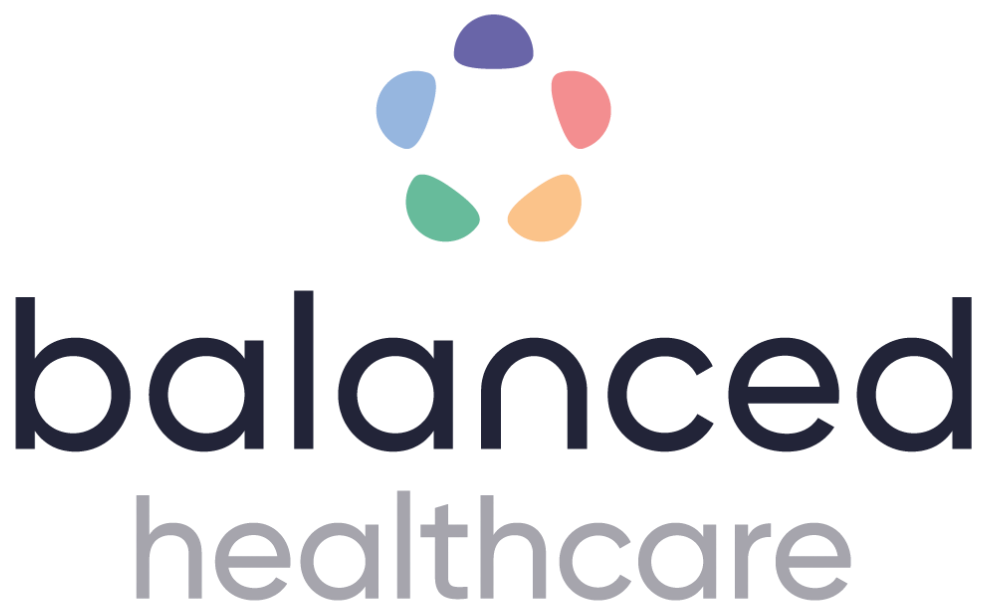Everything You Need to Know About Direct Primary Care
Ever thought about paying to get basic healthcare the same way you pay for your Netflix
subscription?
It might sound unconventional, but that's a little bit of how Direct Primary Care (DPC) works. It is concierge medicine, without the hefty price tag and the need for insurance.
The core of DPC is its affordability: making primary care services accessible to virtually everyone.
But there’s more to it than just that. This guide discusses everything you need to know about how direct primary care could change your relationships with healthcare for good.
What is Direct Primary Care and How Does It Work?
Picture this: You finally get a checkup for that stubborn cough you’ve been dealing with for the past month.
After sitting in the waiting room for almost an hour, the physician sees you for barely two minutes, gives a quick diagnosis, hands you a prescription, and leaves you with more questions than answers.
Days later, a bill arrives—it's nearly $1,000. You're stunned, wondering if there's anything you can even do about it.
Unfortunately, experiences like this are all too common in the U.S., where people regularly skip medical visits out of fear of exorbitant healthcare bills.
Direct Primary Care (DPC) flips this frustrating script entirely. Instead of worrying about surprise charges or rushed appointments, you pay a straightforward, affordable monthly membership fee directly to your healthcare provider.
Think of it as having a healthcare provider on retainer: you pay even during months when you don't visit, but when you do need care, there’s no hesitation or additional cost holding you back.
With DPC, you can get an appointment the same or next-day and you'll meet directly with your healthcare provider who gives you ample time and attention. DPC providers usually spend significantly longer with patients and with appointments lasting 30 to 60 minutes (or more)
you have plenty of time to discuss concerns, review test results, or even just focus on preventive care.
Why Direct Primary Care is Worth It
Here are some key reasons why people often find value in the DPC model:
- Predictable costs: DPC offers a straightforward monthly membership fee with transparent pricing. Patients know exactly what they're paying each month without surprise bills or hidden charges
- Convenience and accessibility: DPC prioritizes ease of access to healthcare providers. Patients typically enjoy direct communication with their providers through SMS messaging, in-clinic visits, video consultations, telehealth, or even house calls.
- More time and attention: DPC providers usually have fewer patients, which gives them more time per patient per consultation. Visits last often 45 minutes to an hour.
- Focus on proactive and preventive care: The convenience and accessibility of DPC encourage patients to be proactive about their health. Regular preventive care, timely screenings, and early interventions are more feasible when patients can easily communicate concerns without worrying about costs or availability.
- Reduced stress and anxiety about getting care:
With easy access to medical services patients often feel less stress when addressing health concerns. People no longer need to delay care due to financial concerns or lengthy processes.
- Stronger patient-provider relationships: DPC providers take on only a small volume of patients, which means they can better understand each patient’s unique needs, history, and lifestyle, and tailor better healthcare as a result.
- Unlimited visits: With our monthly membership, you get unlimited visits with no co-pays—whether you prefer in-person appointments, telehealth consultations, or direct communication via email and text. This means you can reach out to your provider as often as needed, without worrying about extra costs or hidden fees. Your care should be convenient, accessible, and built around your needs.
- Discounts on lab testing, imaging, and medication: Beyond the low-cost membership fee, DPC also helps you save on essential healthcare expenses. We offer discounts on lab test, imaging services, and prescriptions, making high-quality care more affordable and accessible.
Direct Primary Care may not fit every healthcare need or situation, but for those seeking simplicity, transparency, and personalized attention,
it offers valuable benefits worth considering.
What are the Downsides of Direct Primary Care?
Direct Primary Care isn’t without its limitations. Before you jump in, here are some disadvantages worth keeping in mind:
- No effect on deductibles: Your DPC membership fees won't count toward your health insurance deductible. If you face significant healthcare expenses later, such as a hospital stay or specialist visits, you'll still have to meet your deductible separately.
- You will still need your existing insurance: Direct Primary Care typically covers routine care, preventive screenings, and minor acute illnesses. However, it doesn't cover catastrophic events, specialized treatments, major surgeries, or extended hospital stays. To remain fully protected, you'll likely need additional insurance or medical cost-sharing for these more significant health concerns.
- Membership fees may not qualify as expenses for HSAs (Health Savings Accounts): This limitation means you can't use pre-tax dollars to fund your DPC membership fees. However, you’ll need to check with your provider to be sure, as some of them do consider membership fees as expenses.
- Geographical limitations: DPC providers aren't equally available everywhere, and provider choice can sometimes be limited. If you're in an area with fewer DPC options, finding the right fit could be challenging.
Is Direct Primary Care Worth It If You Have Insurance?
Yes, insurance is still important for unexpected events, catastrophic illnesses, or significant hospital stays. DPC complements your existing coverage—including traditional health insurance or Medicare—by providing convenient, personalized primary care at a predictable monthly fee.
Insurance is still recommended, but many choose Direct Primary Care (DPC) because traditional healthcare costs can be overwhelming. While it may not be a perfect solution for everyone, it provides affordable, accessible care that ensures they get the attention they need without the financial strain.
You can choose DPC alongside your insurance to balance everyday healthcare with financial protection against major medical expenses.
How Direct Primary Care Works with Medicare
Let’s say you’re enrolled in Medicare and experience an unexpected injury (like a broken bone) that requires hospitalization. Your hospital stay, specialist consultations, and advanced diagnostic testing like MRIs or CT scans and treatments would be covered under your Medicare benefits.
But for routine care, preventive checkups, minor illnesses, or regular follow-ups (services that often involve primary care providers), you could supplement Medicare by enrolling in a
DPC membership.
In short, your Medicare coverage continues to handle significant medical events and specialty care, while DPC membership supports your ongoing healthcare needs.
Can Medicaid Patients Use Direct Primary Care?
It varies by state. Typically, Medicaid policies like Colorado's prohibit providers from privately billing Medicaid patients for services already covered by Medicaid.
Since Medicaid rules differ significantly by state, it's best to contact your local social services agency or visit your state's official Medicaid website for accurate, state-specific information.
What’s the Average Monthly Cost of a Direct Primary Care Membership?
DPC memberships typically range between $50 and $100 per month for individual adults, though the cost can vary based on factors like location, provider, and specific services included. Some practices offer discounted family plans or tiered pricing based on age.
While fees can fluctuate depending on your region and the scope of care provided, most DPC memberships remain significantly more affordable than concierge medicine or traditional healthcare out-of-pocket costs. To illustrate, concierge medicine fees can cost anywhere from $150 to over $500 monthly, often in addition to regular insurance premiums.
Traditional healthcare, on the other hand, involves copays, deductibles, and hidden charges. A brief emergency room visit or appointment with a specialist can quickly escalate into thousands of dollars, especially if the patient hasn’t met their insurance deductible.
Do DPC Clinics Have Specialists?
Typically, no. However, most DPC providers maintain strong relationships with external specialists. If you require personalized care, your provider can help coordinate referrals and connect you with trusted specialists in their network. They may even assist in scheduling appointments or managing follow-ups.
What’s the Difference between Direct Primary Care and Concierge Medicine?
DPC and concierge medicine share similarities: both involve paying a membership fee directly to healthcare providers for personalized, accessible medical services. However, the main difference lies in affordability and insurance involvement.
Concierge practices typically charge premium fees, cater to wealthier clients, and often still bill insurance providers for services rendered.
In contrast, DPC aims to be accessible to a broader range of patients by offering lower monthly fees and typically does not bill insurance at all.
What’s the Difference between Direct Primary Care and Fee-for-Service?
In a fee-for-service arrangement, patients or their insurance plans pay separately for each healthcare service, procedure, or visit. It may lead to unpredictable and higher healthcare costs as patients face varying charges for each service.
This is different from the DPC model where a patient or a “member” pays a fixed, predictable monthly fee to the provider. This already grants them access to primary care services without additional charges per visit or procedure.
How Many Patients Does a DPC Provider Serve?
On average, a DPC provider may care for around 300 to 600 patients, while traditional practices often handle between 2,000 to 3,000 patients per physician. This reduced patient load allows DPC providers to spend substantially more time with each individual.
Experience a Different Kind of Healthcare
Direct Primary Care brings clarity, convenience, and personalized attention back into focus. While it may not eliminate the need for insurance, it can transform your everyday care experience by putting you in control.
Ready to experience a different kind of healthcare?Balanced Healthcare is a Direct Primary Care clinic servicing Denver Colorado. We offer accessible primary care without the complexities of insurance. With a simple monthly membership, you get direct access to your provider, longer appointment times, and a focus on preventative care.
Interested?Explore how to become a member of Balanced Healthcare today!


